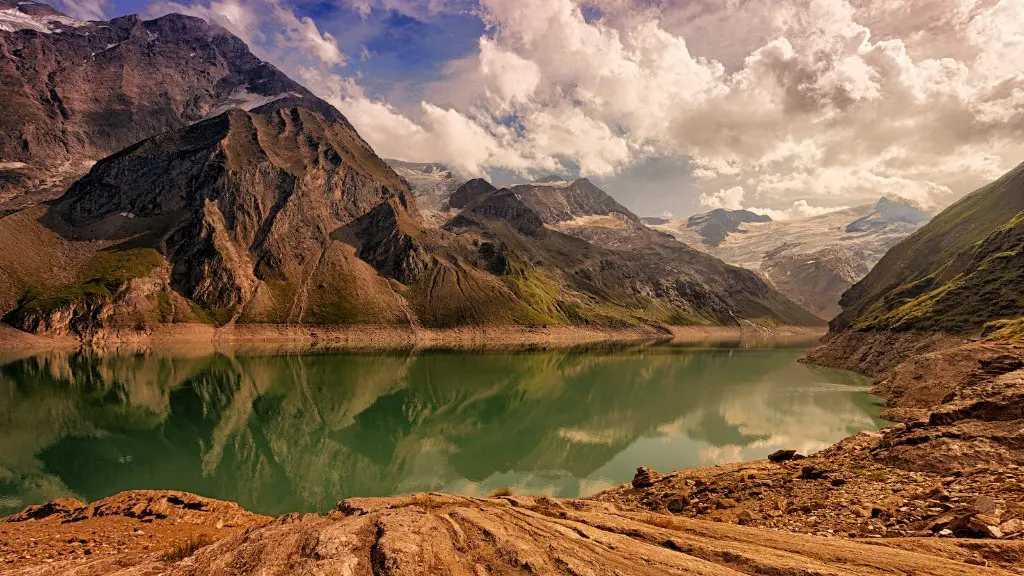What Year Did the Mississippi River Run Backwards?
In 1812, a series of historic earthquakes in the New Madrid area along the Mississippi River caused the inconceivable – the mighty Mississippi ran backwards for several days. This phenomenon was caused by an immense pressure wave presumably produced by the earthquakes. The force from these seismic waves caused the Mississippi River to flow in reverse, running from its mouth near New Orleans, upriver and past Memphis, Tennessee, and even further upriver.
Naturally, locals were perplexed and scared. Word of the strange event reached far beyond the Mississippi River valley, though early records seemingly suggested it was more myth than reality. But, credible accounts exist. A man wrote in a letter that the river flowed backward like a “tremendous waterfall.” Furthermore, an inland sea was allegedly formed in Illinois due to the surge.
The phenomenon of the Mississippi River running backwards can be attributed to a liquid surge, which is when a large body of water is displaced due to considerable forces such as seismic waves, underwater landslides or tsunamis. Geologists suggest that large bodies of water rarely turn, or “flip” due to these events, but small rivers and streams are more likely to exhibit this behavior.
Experts are divided on this topic. Some say the pressure from the earthquakes caused some temporary reversals of the Mississippi River, while others deny such claims. The debate is still ongoing.
Whatever the debate, the effects of the massive account of the Mississippi River’s reversal are forever etched in history. The waves generated and the force put on the river were simply unparalleled by any other force of nature experienced thus far in the region, and they still remain an impressive subject to talk about today.
What Caused the Reversal?
The seismic event known as the New Madrid Earthquake was so severe that it was felt as far away as New York and it has been regarded as one of the most powerful natural disasters to hit North America. With a magnitude estimated to range from 8.0 to 8.6 on the Richter Scale, this was – and is to this day – the largest known earthquake to have struck North America east of the Rocky Mountains.
The quake caused massive damage in the area, and the effects of the severe mechanical disruption of the ground caused the river to reverse. The shaking of the ground caused a huge pressure wave to travel through the water of the Mississippi. This then caused the water itself to flow against the direction it normally takes, leading to a swirling of the river that extended considerably upriver.
Furthermore, the pressure of the seismic waves was strong enough to unbalance the balance of the water in the river, making it run in the opposite directions. It has been hypothesized that the water ran downstream in one direction and then returned upriver in the other. It must have made for a truly amazing sight to be a witness to this phenomenon.
What Were the Chesapeake Bay Earthquakes?
In addition to the New Madrid Earthquakes, the Chesapeake Bay Earthquake of 1833 is also thought to have caused the Mississippi River to flow in reverse. According to geological records, this event occurred along the Western Shore of the Chesapeake Bay and was estimated to have reached a magnitude of 5.8 to 6.25 on the Richter Scale.
The shock waves caused by this quake jolted the banks of the Mississippi, pushing the water in the wrong direction. Some reports suggest the water flowed backwards for several days, and fish were even seen swimming upstream. Shock waves were felt as far away as Milwaukee, Wisconsin, and although there was no serious damage or casualties, the seismic activity was enough to displace the water upstream.
It is thought that several of these earthquakes were powerful enough to cause the river to run backwards, although it is not clear exactly how long a reversal lasted. The force of the seismic waves is believed to have returned the water to its normal levels fairly quickly, but there is no way to know for sure.
The Aftermath of the Reversal
The earthquake caused significant damage in the area, including the destruction of several towns and cities. In some places, water and mud reached 10-15 feet (3 to 4.5 meters) and covered every possible structure in its path. Buildings were destroyed and levees were broken by the force of the water.
It took over a year for all the water to recede from the affected areas, and the resulting damage was estimated to be in the millions of dollars. Buildings and infrastructure were completely destroyed and the landscape of the area changed drastically.
What is perhaps most impressive is that, despite this immense event, the Mississippi River quickly recovered and returned to normal flow. It just goes to show the resilience of nature, and how powerful seismic waves can be.
The reversal of the Mississippi had a significant effect on navigation, both on the river itself and on its tributaries. In many places, the river became so shallow that it was impossible to navigate. In addition, the reversal caused a huge amount of sediment to be deposited in the river, creating sandbars in areas where there had previously been none.
Furthermore, the currents grew so strong in some places that boats were unable to move against them.This led to a complete stoppage of navigation in some parts of the river, making it difficult for traders and settlers alike to safely travel the Mississippi.
This disruption posed a real problem for people who used the Mississippi for their livelihood. Luckily, the effects of the earthquake were short-lived and navigation on the river eventually returned to normal.
Can the Mississippi River Run Backwards Again?
Geologists generally agree that after a seismic event of such magnitude, it is unlikely that the Mississippi River will ever run backwards again. According to The United States Geological Survey (USGS), while the Mississippi is an incredibly powerful river, the force of a major earthquake must exceed the flow of the Mississippi to cause a liquid surge and cause the river to temporarily run backwards.
Earthquakes are far more likely to happen in areas where the crust is young, active, and fragile. In the case of the Mississippi River, the risk of a seismic event that is large enough to generate a liquid surge is very low. And even if such an event were to occur, the effects are likely to be very localized and temporary.
While the magnitude and force of this event cannot be denied, it is also important to remember that the Mississippi River quickly recovered and returned to its normal flow. This serves as a reminder of the incredible power of nature and the resilience of bodies of water.
What Could Happen in a Major Earthquake?
While the chances of the Mississippi River running backwards are not very likely, the effects of a major seismic event in the area could still be devastating. Research indicates that a major earthquake along the New Madrid Fault could cause significant damage to communities and infrastructure, producing significant shaking and possibly triggering landslides, liquefaction, and flooding.
The USGS estimates that such an event could cause up to $100 billion in damage and affect states across the region, from as far away as Alabama and Illinois. This highlights the importance of taking precautions and being prepared for potential natural disasters.
Government agencies are working hard to improve regional measures and to build awareness of the region’s vulnerability to natural disasters. This includes improving seismic monitoring, tsunami and storm warning systems, developing communities with an architecture that can withstand seismic shaking and using advanced mapping tools to assess the magnitude of likely hazards.
Technology Improving Earthquake Response
The advances in technology are playing a major role in how we prepare for and respond to earthquakes. The advancement of technology has allowed us to detect seismic activity faster, which can help increase disaster preparedness and provide more accurate information about the seismic activity.
In addition, tech companies are developing technological solutions to improve earthquake safety and help in disaster response. These include everything from early warning systems and automated damage assessment to predictive analytics and virtual reality simulations.
While advances in technology have certainly improved our ability to prepare for seismic activity and act quickly in response to an earthquake, it’s still important to take the necessary steps to protect lives and limit damage before, during and after an earthquake.
Conclusion
The magic of the Mississippi River running backwards in 1812 is a sight that will never be seen again due to the combination of geological conditions that had to exist at the time. Thankfully, technology and our understanding of seismic activity has improved so much over the years that such an incident is highly unlikely to occur again in the near future.





